A university constituency is a constituency, used in elections to a legislature, that represents the members of one or more universities rather than residents of a geographical area. University constituencies may or may not involve plural voting, in which some voters are eligible to vote in both a university constituency and a geographical constituency.
The Communist Party of Canada (Ontario) is the Ontario provincial wing of the Communist Party of Canada. Using the name Labor-Progressive Party from 1943 until 1959, the group won two seats in the Legislative Assembly of Ontario: A.A. MacLeod and J.B. Salsberg were elected in the 1943 provincial election as "Labour" candidates but took their seats as members of the Labor-Progressive Party, which the banned Communist Party launched as its public face in a convention held on August 21 and 22, 1943, shortly after both the August 4th provincial election and the August 7th election of Communist Fred Rose to the House of Commons in a Montreal by-election.

Olympiastadion is a sports stadium in Berlin, Germany. It was originally built by Werner March for the 1936 Summer Olympics. During the Olympics, the record attendance was thought to be over 100,000. Today the stadium is part of the Olympiapark Berlin.

The United States Senate elections of 1948 were elections which coincided with the election of Democratic President Harry S. Truman for a full term. Truman had campaigned against an "obstructionist" Congress that had blocked many of his initiatives, and in addition the U.S. economy recovered from the postwar recession of 1946–47 by election day. Thus Truman was rewarded with a Democratic gain of nine seats in the Senate, enough to give them control of the chamber.

The United States Senate elections of 1936 coincided with the reelection of President Franklin D. Roosevelt. The Great Depression continued and voters backed progressive candidates favoring Roosevelt's New Deal in races across the country. The Democrats gained 5 net seats during the election, and in combination with Democratic and Farmer–Labor interim appointments and the defection of George W. Norris from the Republican Party to become independent, the Republicans were reduced to 16 seats, the most lopsided Senate since Reconstruction.

The 1964 United States House of Representatives elections was an election for the United States House of Representatives in 1964 which coincided with the election to a full term of President Lyndon B. Johnson. Johnson's landslide victory over Barry Goldwater allowed his Democratic Party to gain a net of 36 seats from the Republican Party, giving them a two-thirds majority in the House. This is the largest House majority held by either party since 1936. The election also marked the first time since Reconstruction that Republicans made inroads in the deep South. Notable freshmen included future Speaker of the House Tom Foley, future Senator and Secretary of Transportation Brock Adams, future Senators John V. Tunney, John Culver, and William Hathaway, future Governor of Ohio John J. Gilligan, future Secretary of the Army Bo Callaway, future Lieutenant Governor of California Edwin Reinecke, and former Mayor of Dallas Earle Cabell.
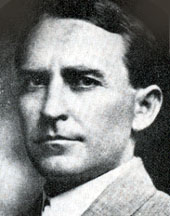
The 1936 United States House of Representatives elections was an election for the United States House of Representatives in 1936 which coincided with President Franklin D. Roosevelt's landslide re-election. Roosevelt's Democratic Party gained twelve more net seats from the Republican Party, bringing them above a three-fourths majority. This was the largest majority since Reconstruction. The last time a party won so decisively was in 1866.
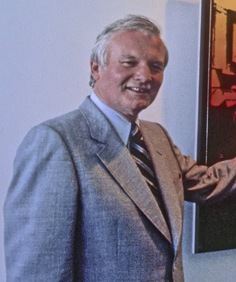
The Ontario general election of 1975 was held on September 18, 1975, to elect the 125 members of the 30th Legislative Assembly of Ontario of the Province of Ontario, Canada.

The Seventy-fourth United States Congress was a meeting of the legislative branch of the United States federal government, composed of the United States Senate and the United States House of Representatives. It met in Washington, DC from January 3, 1935, to January 3, 1937, during the third and fourth years of Franklin D. Roosevelt's presidency. The apportionment of seats in the House of Representatives was based on the Fifteenth Census of the United States in 1930. Both chambers had a Democratic supermajority.
National University of Ireland (NUI) is a university constituency in Ireland, which currently elects three senators to Seanad Éireann. Its electorate is the graduates of the university, which has a number of constituent universities. It previously elected members to the House of Commons of the United Kingdom (1918–21), to the House of Commons of Southern Ireland (1921) and to Dáil Éireann (1918–1936).
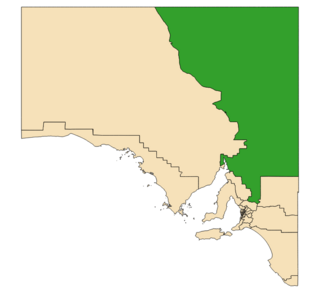
Stuart is a single-member electoral district for the South Australian House of Assembly. At 330,656 km², it covers the northeast part of the state extending from just north of the Barossa Valley all the way to the Northern Territory, Queensland and New South Wales borders. The seat's main population centre is Port Augusta, however the seat spans from Kapunda, 80 km north of Adelaide, up to the state borders, and includes the agricultural areas of Orroroo, Peterborough, Jamestown, Burra and Leigh Creek. Stuart is the second-largest electorate by area in South Australia.

Lester Jesse Dickinson was a Republican United States Representative and Senator from Iowa. He was, in the words of Time magazine, "a big, friendly, white-thatched Iowa lawyer." In early 1936 he dreamed of winning the presidency. However, the only race he would enter that year would be for his own seat in the Senate, and he would lose it.

The Buffalo Bisons were a professional ice hockey team representing Buffalo, New York, although they played home games in nearby Fort Erie, Ontario, Canada, at the 5,000-seat Peace Bridge Arena.
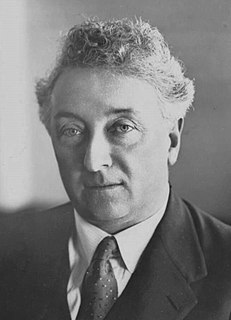
Federal elections were held in Australia on 23 October 1937. All 74 seats in the House of Representatives, and 19 of the 36 seats in the Senate were up for election. The incumbent UAP–Country coalition government, led by Prime Minister Joseph Lyons, defeated the opposition Labor Party under John Curtin.
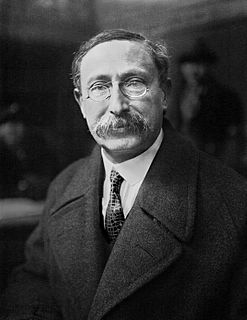
French legislative elections to elect the 16th legislature of the French Third Republic were held on 26 April and 3 May 1936. This was the last legislature of the Third Republic and the last election before World War II. The number of candidates set a record, with 4,807 people vying for 618 seats in the Chamber of Deputies. In the Seine Department alone, there were 1,402 candidates.
The Greenock by-election, 1936 was a by-election held on 26 November 1936 for the House of Commons constituency of Greenock in Renfrewshire, Scotland.

The Ross and Cromarty by-election, 1936 was a parliamentary by-election for the British House of Commons constituency of Ross and Cromarty held on 10 February 1936. The by-election was triggered when Sir Ian Macpherson, a Liberal National was given a peerage. This enabled cabinet minister Malcolm MacDonald to return to Parliament.

The Australian Labor Party (NSW), commonly known as Lang Labor, was a political group arising from a major breakaway from the Australian Labor Party in New South Wales that operated from 1931 to 1936, when the two groups were reconciled.

The 1936 United States elections was held on November 3. The Democratic Party built on their majorities in both chambers of Congress and maintained control of the presidency.

The 159th New York State Legislature, consisting of the New York State Senate and the New York State Assembly, met from January 1 to May 13, 1936, during the fourth year of Herbert H. Lehman's governorship, in Albany.
















